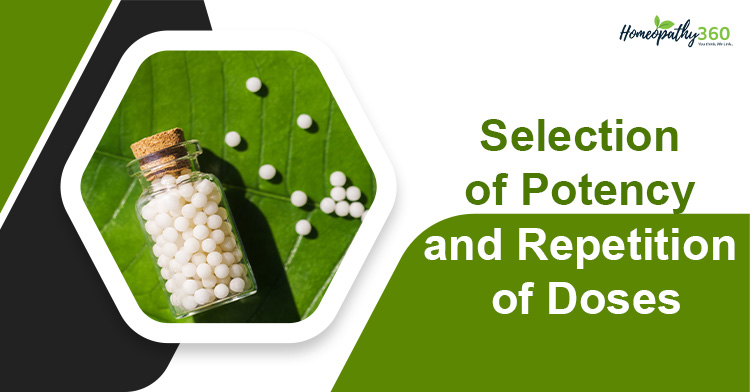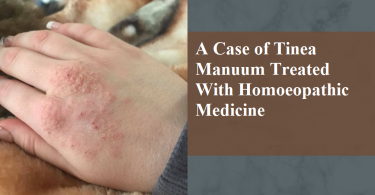
Repetition of medicine in Homoeopathic practice has always been a confusing entity. As master Hahnemann himself held different opinion regarding it which is well documented in 5th and 6th edition with its stark differences.
Homoeopathy is based on law of ‘SIMILIA SIMILIBUS CURENTURE ‘as we already conversant with the fact that homoeopathy is an art and science. A homoeopathic dose includes Potency, Quantity Form, repetition & administration of the medicine. Proper repetition is as important as proper prescription in homoeopathic clinical practice.
After discovery of Homoeopathy, there was a difference in opinion amongst homoeopathic physicians regarding the selection of the potency.
As per law of minimum dose to treat a patient, we have to give the medicine in a minimum dose [Refer cardinal principles]. minimum per se dose which is just enough to evoke a reaction in the patient. if we give less than minimum there is no action, if we give more than minimum there will be excess reaction which might lead to homoeopathic aggravation So that exact potency and repetition of doses has to be selected with the greatest care – Not to Less, Not to More
Selection of potency depends upon following aspects –
- Susceptibility of the patient
- The seat of the disease
- The nature and intensity of the disease
- The stage and duration of the disease
- Any previous treatment received
1. Susceptibility of the patient – It is different in each individual at different circumstances. As susceptibility changes, potency also changes. The factors that modify susceptibility are –
- Symptom’s similarity C) Constitution and Temperament
- Age of the patient D) Habits and Environment
E) Pathological condition
A) Symptom similarity – If numerous characteristic symptoms of the patient match with the symptoms of the medicine high potency should be administered.
High symptom similarity → High susceptibility → High potency
Low symptom similarity → Low susceptibility → Low Potency
B) Age of the patient – In children and young age susceptibility is high and in old age susceptibility it is low due to senile changes.
C) Constitution and Temperament – The patient of nervous, sanguine and choleric temperament medicine should be given in high potency, they are quick to react and impulsive, low potency works best in phlegmatic temperament as they are slow to act.
D) Habits and Environment – If patient is having sedentary life with more intellectual work having high susceptibility, so they need high potency. patient exposed to chemicals; tobacco needs low potency.
E) Pathological Condition – advanced pathological changes, calls for low potency
2. Seat of the disease – If vital organ is involved, we should use low potency.
3. Nature and intensity of the disease – In acute diseases the symptoms are recent in origin so patient remember almost all the symptoms easily. More Symptom similarity needs high potency. In chronic disease symptom similarity is low, so low or moderate potency is advised.
4. Stage and duration of disease – In chronic diseases, patient is suffering from long period therefore susceptibility is low so low potency enlightens.
5. Any previous treatment received – If patient received previous allopathic treatment will respond curatively with high potency.
Repetition of doses –
Once the physician has decided the potency, he must also decide the repetition of the medicine.
With reference from aphorism no 245-251 organon of medicine 6th edition it is stated regarding the repetition of medicine is, never repeat the medicine when the previous dose is acting beneficially. In other words, repeat the medicine only when the previous dose stops working beneficially.
Three golden rules are to be observed for not changing a remedy, which are as follows –
1. Never repeat a remedy when the patient himself is improving.
2. Never change a remedy when symptoms are following Hering’s Law of Cure i.e., from within outward, from above downward, symptoms disappearing in a reverse order.
3. Never change your remedy when a discharge or eruption follows the administration of the remedy.
Administration of medicine in one or more doses
The high potency favors the single dose, although two, three, or more doses of a high potency, may be given at short interval – every 4, 8 or 12 hours, especially in acute & emergency cases. In acute cases the action of the dose may get exhausted within a few minutes, so the repetition in acute cases should be frequent.
In case of chronic diseases, a single dose of similimum may go on acting for many months, so the repetition of the medicine in case of chronic disease may be low.
REFERANCES–
1. Organon of medicine 5th and 6th edition
2. Chronic disease – Dr. Hahnemann.
3. Lecture on homoeopathic philosophy – Dr. J.T. Kent
About the Author:
- Dr. Mayuri Bangar
BHMS Intern
MHF’s HMC Sangamner
- Dr Anum Zaheer
BHMS, MD(Hom), PGDEMS
(Gold medallist)
Homoeopathy heals



